1. Introduction
The number of mobile phones that users purchase has risen and it has reached a plateau of over one billion per year during an eight-year period since 2014 [1]. The increase in the use of mobile phones has come largely as both the global population has been able to get access to these, along with a fall in production costs and thus prices. In addition, the development of smart phones to include an increasing amount of tools make smart phones more necessary in order for consumers to carry out everyday tasks. As documented, it can be used both for positive and negative effects, from supporting young people and students in retrieving information and supporting learning to becoming a nuisance and even a tool to commit social faux-pas and more prolific bullying through online methods [2].
With the increased availability and usage of mobile phones comes also an increased demand for them, and as a result more phones are being produced by more companies. This leads to a greater variation in types of phones, including size, shape, style as well as quality in terms of memory, touch screen, finesse, operating systems and other aspects. With this increased set of diversified aspects of phones, consumers also develop more pinpointed preferences.
Among the studies about factors that influence customers’ choices of mobile phones, Tanveer et al. (2021) conducted a study about young adults’ decision on mobile phone choosing, price and characteristics of mobile phones were discussed. The suggestions they draw out was to identify the target market to set different prices. It further explains that even if the prices become lower, the attractiveness of phones should not reduce, which can have a positive influence on customers [3].
Due to this more complex consumer behavior comes a greater need to understand the considerations of demographics that are most likely to purchase phones. This research has identified younger generations as the main consumer groups for mobile phone purchases, and thus it has looked more deeply into the preferences and choices for people aged 15 to 25.
This paper shows how young people know about the mobile phones and how the factors such as prices, phone designs, brands, pixels and build-in speakers influence young people’s choices and their preferences.
2. Method
2.1. Study Population
Sample objects are 51 in total, including both male and female purchasers. The sample population is all at the age of 15-25, who are currently international senior high school students or the students from universities in Canada.
2.2. Questionnaire Design
The question setting starts from how the young generation know about the different types of mobile phones, the design characteristics and the functions of mobile phones that customers would consider while purchasing phones.
3. Results of the Questionnaire
3.1. The Ways that Young People Learn about Mobile Phones
Young phone users are more willing to spend more money to buy phones [4], therefore, the ways that people know about previous or new products are important for mobile phone seller. From the questionnaire, almost a half of the young purchasers know the information about phones from advertising, including TV advertisements and online advertisements. As shown in figure 1, receiving information from friends and clerks’ introductions of phones in phone stores take up smaller shares, at 20% and 12% respectively. For the people that know about phones in other ways, most of them get information from social media, official websites of mobile phone brands, or from their parents. Interestingly, for young people who know about phones from their parents, most of them get the information from their father, while only few people learn from their mother. Though female purchasers are more willing to spend more money on phones [4], in this case, male purchasers seem to have more information of mobile phones and they consistently keep up with the news about phones. This may owe to that men are more likely to own a mobile phone than women, and men are more probable to use internet on mobile phones [5].
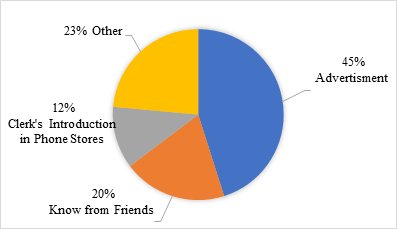
Figure 1: The ways people know about phones.
3.2. How Price Affects Young Users’ Choice
Price has been regarded an important factor that influence consumers’ decision, no exception for mobile phone market. As shown in figure 2, the young people who are currently in senior high school or university seem more interested in high-priced mobile phones – 58% of them accept the price from CAD$1000 to CAD$2000, which is far more than the price that the general population accepts. For example, Chinese population generally accept prices of 2000-3000 yuan (approximately CAD$378-CAD$567) [4]. Since the study population are international students, the price that is acceptable for them would be affected by the financial condition of their family – mostly from middle or high-income families.
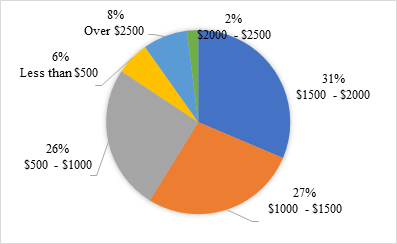
Figure 2: Price of mobile phones that young people accept.
Another important factor that affects consumers’ decision making is discounts. Deepika Ganlari et al. found that less than 1% of general population are totally not affected by promotional offers, whereas more than half of respondents held neutral attitude towards promotions and for 10% customers, their choices are strongly influenced by it [6]. Through the questionnaire, the proportion of young population that are influenced by the discounts is very notable – over 76% of them consider discounts and would change their decision. For 23.5% of the study population, discount is a decisive factor for them to choose mobile phones (as shown in figure 3).
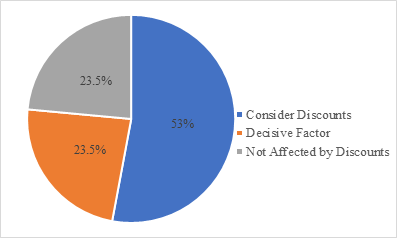
Figure 3: The effect of discounts on young customers’ choices when they purchase phones.
3.3. The Characteristics and Functions of Mobile Phones That Affects Young People’s Decision
The Appearance of Mobile Phones
Product design is the chance for sellers to get differential advantage when they promote their products [6]. It leaves the first impression to the customers, which has been considered as an important role to attract customers. However, the result of questionnaire is quite shocking – almost a half (49%) of young people chose they would not be influenced by the appearance of mobile phones (as shown in figure 4). This unexpectable result may be caused by phone cases. As young people more intend to buy phone case whose pattern satisfy them and show their personality, they can cover the original design by using phone cases.

Figure 4: The importance of smartphone appearance for different young people.
Young Customers’ Loyalty to Mobile Phone Brands
Shahzad Khan et al. (2013) found that the most influential factors for brand choosing are quality of phones, brand image and suggestions from family and friends [7]. Most young people are loyal to the brands they prefer, with 63% of them only considering the certain brands when they purchase mobile phones (as shown in figure 5). This indicates that brand building is essential. From previous study, it reveals that ethical marketing strategy plays very important role in driving customers’ brand loyalty [8]. The quality of products, service attitude, promotion and customer satisfaction all influence brand images [9], which will people’s choices of mobile phones.
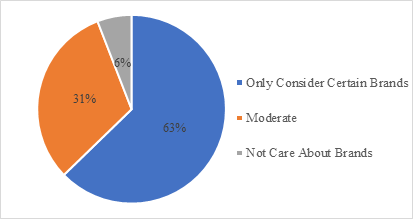
Figure 4: The effect of mobile phone brands when young people purchase phones.
The Impact of Pixel on Young Customers’ Choices
Pixels are the foundations of building a digital picture. The pixels of a phone are the key that impact on the display ability of mobile phones. As people widely share their photos or videos, the high-quality of display ability seems more important than ever. For 80% of the respondents think that pixel of phones matters and it influences their decision of purchasing mobile phones (as shown in figure 5).
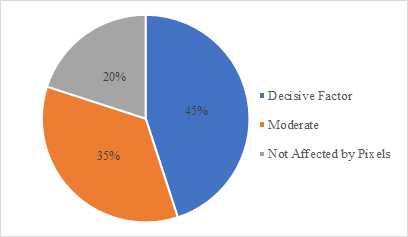
Figure 5: The impact of pixels on young users’ decisions.
How the Quality of Built-In Speaker Affect Young People’s Choices of Phones
The use of headphones or ear pods has been widely spread. For instance, people buy one pair of headphones every two years on average [10]. Logically, the significance of build-in speaker of mobile phones is expected to have a weak effect on people’ choices. However, unexpected result is drawn from the survey. The importance that young people place on it is clearly visible – 94% of them think the quality of build-in speaker is important part that they consider when they purchase mobile phones. Among all the study population, 45% of young people consider it as the decisive factor for them to make choice on mobile phones (as shown in figure 6). The possible reason behind this phenomenon is because many young people use mobile phones for recreation nowadays, such as watching movies or listening to music. Though headphones are popularized nowadays, almost all entertainment activities on mobile phones are inseparable from a crucial part of phones – the build-in speakers. The quality of build-in speaker widely influences people’s experience whenever they use mobile phones.

Figure 6: The effect of the quality of build-in speaker on young users’ choices of phones.
4. Suggestions to Mobile Phone Firms
Based on the discussion above, advertising is found out to be the most common way for young generation to receive information about mobile phones. Mobile phone companies can be more inclined to invest in advertising to spread information and promote their new phones and their latest news. As for setting price, though young people can accept much higher price than general population, setting a reasonable price is still important as it is related to ethnic marketing strategies of companies, which takes up the driving role of developing brand loyalty of customers. Furthermore, not only for prices, but the basic configurations of mobile phone are also vital. Pixel and build-in speaker are the main factors that young people concern of. High-quality display ability and speaker can increase the competitiveness of companies and attract more young customers as from the survey, almost half of them consider the quality of pixel and build-in speaker as decisive factor for them to make choices. Though many mobile phone brands propose to use appealing design to gain more consumers, from the survey, using good-looking design seems not so successful to appeal young people. Instead, mobile phone firms can improve the design of phone case accessory, which not only can effectively increase the multiplication of design styles, but also develop a popular side business.
5. Conclusion
Based on the results of questionnaire, the main method for young people to know about mobile phones is from advertising. Moreover, young population are found to be more willing to spend more money on purchasing mobile phones than the general population, though their choices are still most likely to be affected by discounts. The factors (brand, pixel and build-in speaker) that are all greatly influencing young people’s choices, except the appearance of mobile phones, which does not influence most of them to make decision.
Respondents are limited as international students at age of 15-25 only, which is lack of representative for the whole young people group. Their family financial conditions are similar to some extent, which leads to the unexpected result of acceptable price for young population. The sample size of study population is 51, which is a small group of respondents. This leads to that the results of the questionnaire would not represent the real phenomenon when young people choose their mobile phones. So future study should involve more respondents whose personal and family conditions are various in order to make sure that the study population would be able to fully represent a certain group in society.



